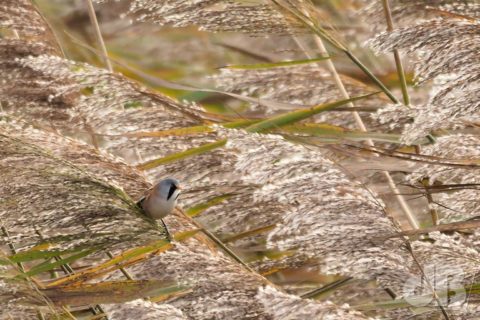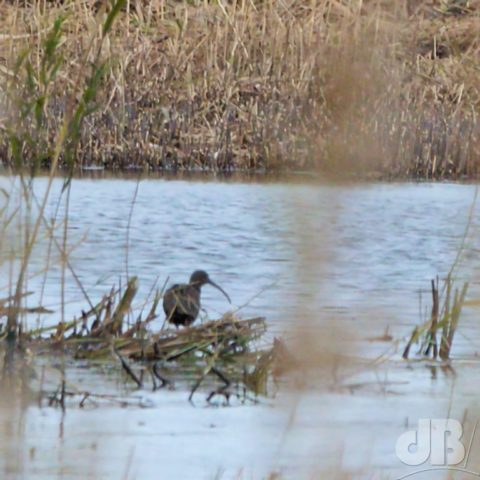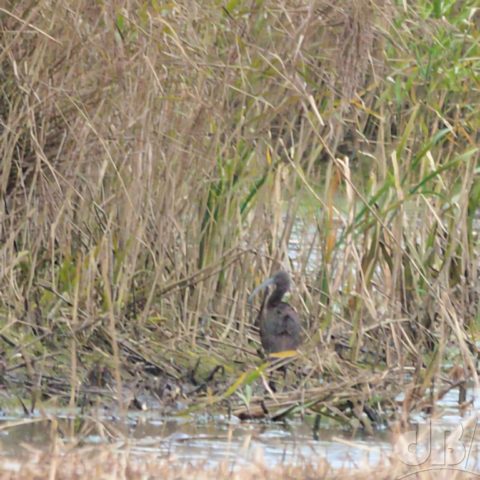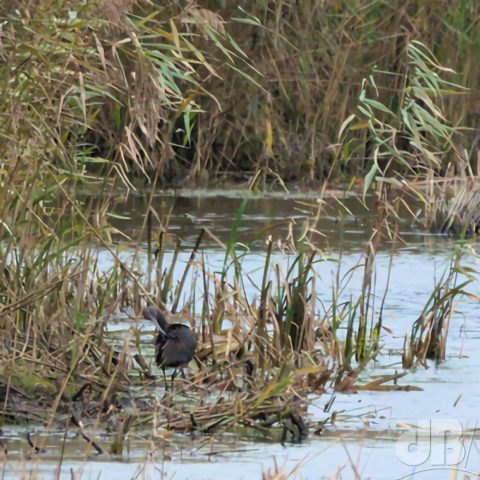UPDATE: As of 2020-12-08 there have been sightings of about seven Glossy Ibis around the area at RSPB Fen Drayton, Ouse Fen, Ouse Washes, at Earith Sluice, and elsewhere. This is almost an irruption!
You don’t expect to turn up at a Cambridgeshire wildlife reserve to be told by the warden (Hannah Bernie) that there’s an African bird species hanging around. But, in early November, that’s what we heard at RSPB Ouse Fen. Actually, I’d heard that this species was at RSPB Fen Drayton, but I’m not a real twitcher so hadn’t gone out of my way to see it there. We were actually there on a fairly calm day to see if we could sight the Bearded Reedlings.

Warden Hannah told us there was a Glossy Ibis, Plegadis falcinellus, present and it had been seen but it was lurking behind the reeds at the time. She also mentioned a 10000-starling murmuration the night before. I visited the same sight later that day and reckon there are 14000 starlings murmurating there.

Anyway, back to the GI, we didn’t see it and we only heard Beardies. So I headed back again today, I usually visit once a week. Parked up and within 200m of the car, there it was, on the edge of the reeds. Apparently, a birder had predicted one might turn up, the RSPB having cleared a lot of old reeds from these former gravel pits. I got a few record shots, nothing clear nor sharp.

Fellow walker – name of Richard – with a birding ‘scope, stopped 2-3 metres away from me as I was snapping the bird on my return pass. He mentioned that they are not as rare as one might imagine in the British Isles these days. He said he’d seen them five or six times over a decade of visiting this reserve. Given that other African birds – Little, Great White, and Cattle Egret are also rising in numbers here we mused on how even the most casual birders are no longer as impressed as they once were at the sight of such species. Indeed, the presence of a Whinchat or a Pied Flycatcher might be more exciting than any Egret or even the GI, amazingly.

Climate change will definitely be driving the northwards flights of these birds which originate in sub-Saharan Africa but are spreading their range. But, Richard also mentioned that the accidental introduction of Red Swamp Crayfish (Procambarus clarkii) to lakes in northern France had provided a lot of food for such species and they are thus much further north partly because of that. It is only a matter of time, perhaps, before that invasive crustacean finds a niche in the former gravel pits of East Anglia and we begin to see even greater numbers of these African birds settling in this part of the world.
First time I saw a wild Glossy Ibis was in Botswana in the early 1990s, if memory serves. Most recent sighting was on the edge of a former gravel pit in a windswept patch of South Cambridgeshire.